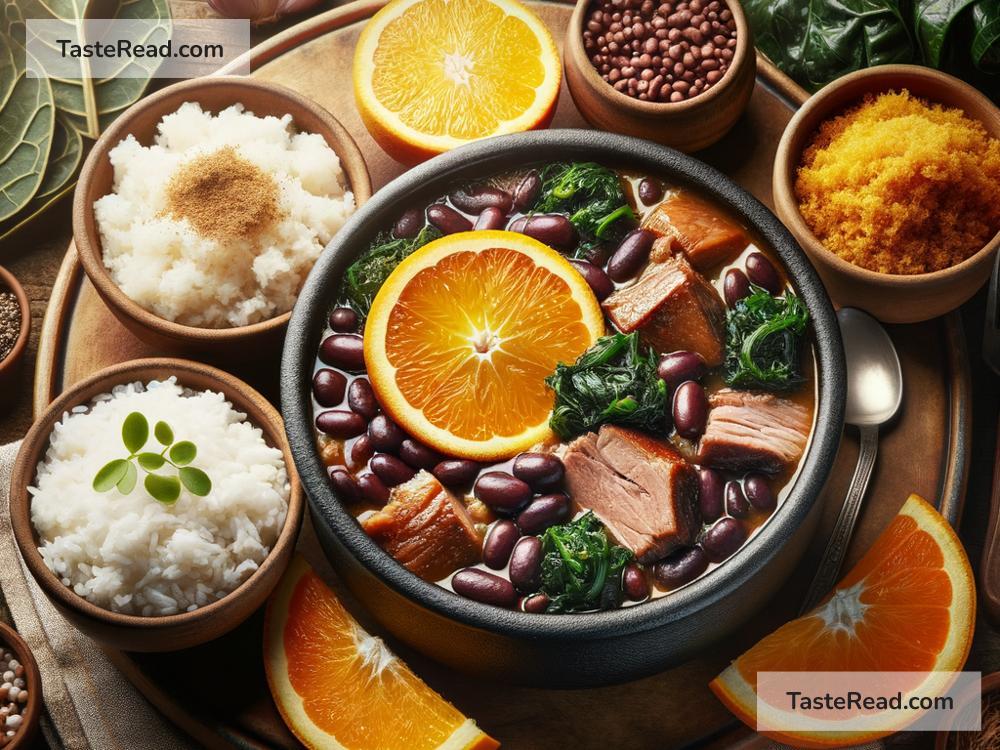Discovering the Rich Flavors of Brazilian Feijoada
If you’re a food enthusiast keen on exploring the rich tapestry of world cuisine, you might want to take a closer look at Brazil’s national dish: Feijoada. This hearty stew is more than just a meal; it’s a celebration of flavor, history, and culture, all simmered together in one pot. So, grab a spoon as we dive into the delicious world of Brazilian Feijoada.
What is Feijoada?
At its core, Feijoada is a stew of beans with beef and pork. It’s traditionally served with rice, collard greens, farofa (toasted cassava flour), and a slice of orange to cut through the richness. But, like any traditional dish, there are as many variations as there are cooks who make it. Some might add sausage, others might use different types of smoked meats, but the essence of Feijoada remains the same: it’s a dish meant to satisfy the soul as well as the belly.
A Taste of History
Feijoada’s roots stretch back to the 16th century, when Brazil was a colony of Portugal. It’s often said that the dish was created by slaves, who would take the leftover cuts of pork from their masters and cook them with black beans. However, some food historians argue that Feijoada has a more European origin, pointing to similar dishes in Portugal and other parts of Europe. Regardless of its precise origins, Feijoada has evolved over the centuries to become a dish that captures the essence of Brazil’s multicultural heritage.
A Celebration in a Pot
In Brazil, Feijoada is more than just a meal; it’s an event. Traditionally served on Wednesdays and Saturdays, families and friends gather to enjoy this dish slowly cooked to perfection. The preparation of Feijoada can be a day-long affair, with each ingredient added at just the right moment to ensure a complex layering of flavors. Eating Feijoada is a communal experience, reminiscent of a barbecue or a family holiday, where the act of sharing food strengthens bonds and creates memories.
Savoring the Flavors
For those who’ve never tasted Feijoada, the experience can be revelatory. The stew itself is robust and smoky, with the beans and meat melding together in a rich, savory broth. The accompaniments add contrasting textures and flavors: the rice provides a soft backdrop, the collard greens a bitter bite, the farofa a sandy crunch, and the orange a burst of freshness. Each element plays its part, creating a harmonious whole that’s deeply satisfying.
Making Feijoada at Home
While the traditional preparation of Feijoada can seem daunting, with a little patience, anyone can bring the flavors of Brazil into their kitchen. Here’s a simplified recipe to get you started:
- Ingredients:
- 1 lb black beans
- ½ lb pork belly, cut into chunks
- ½ lb smoked sausage, sliced
- 1 lb beef short ribs
- 2 onions, chopped
- 4 cloves of garlic, minced
- Salt and pepper to taste
-
Water
-
Preparation:
- Soak the black beans overnight.
- In a large pot, combine the beans, meats, onion, garlic, and enough water to cover everything. Bring to a boil, then reduce to a simmer.
- Skim off any foam that rises to the surface, then simmer for about 3 hours, or until the meat is tender and the beans are cooked through.
-
Season with salt and pepper to taste.
-
Serving:
- Serve the Feijoada hot, with rice, collard greens, farofa, and slices of orange on the side.
In Conclusion
Feijoada captures the spirit of Brazil in a single dish: diverse, vibrant, and endlessly satisfying. Whether you’re enjoying it in a bustling Brazilian city or making it in your own kitchen, Feijoada is a culinary experience that transcends borders, bringing people together around the simple joy of sharing good food. So, don your chef’s hat, and let the rich flavors of Brazilian Feijoada warm your home and your heart.


